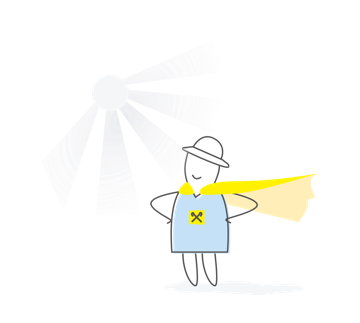Operational changes in financial planning
In quarantine conditions, almost every owner of a small and medium-sized business discusses how to maintain the business and its liquidity. About how to survive in the new realities and plan financial expenses, said at his webinar Andrei Zhovtanetsky, MBA - professor of finance and macroeconomics at Lviv Business School UCU and financial director of FatSound.Every businessman is like a pilot. For effective business management, he, as a pilot, must see the entire “dashboard” in front of him and understand what certain indicators signal.
Management of risks
In small and medium-sized businesses, there are few enterprises that have accumulated reserves of funds and had a plan for responding to the financial crisis. Therefore, today the majority must quickly respond to the situation and think out a plan of action. Moreover, each entrepreneur must understand the structure of risks and how to manage them. As for finances, I recommend evaluating them through the prism of risks:
• Macro-risks: macroeconomic and geopolitical. They are the least controlled and can have the biggest business impact.
• Credit - risks associated with the company's counterparties. You need to understand whether customers can quickly pay off receivables, and suppliers make timely deliveries, and whether it is possible to agree with them on a deferred payment.
• Operational risks include everything related to people, processes, and technologies. They are the most controlled.
To have more control over the situation, it is worth making a plan that will cover the following issues:
1. Building a new strategy and paradigm for the existence of the company.
2. Analysis of working capital.
3. Analysis of the cost structure of the company;
4. Analysis of fixed assets.
5. Analysis of the sources of financing the company.
Building a new strategy
In this direction I see three scenarios. Analyze which one is most acceptable to you.
• Staying in the industry and doing what you did.
• Remain in the industry, but radically reform activities.
• Generally go to another business, where there are opportunities now and money is spinning.
Working capital analysis
Working capital is the difference between current assets and current liabilities. This is a very important indicator because it reflects the current position of the company regarding solvency.
Current assets are cash and cash equivalents (money in bank accounts and market money instruments that you own), receivables, stocks (raw materials, manufactured products, goods), as well as deferred expenses.
Current liabilities are liabilities that we make to the government, suppliers, creditors, and employees. That is, all obligations that need to be repaid during the year.
In a healthy company, the ratio of working capital (current assets / current liabilities) should range from 1.2 to 2. All that is higher than 2 is excess working capital, which will lead to stagnation of the company. In modern conditions, business processes need to be restructured so that this indicator is at the level of 1.5, a maximum of 1.7-1.8.
In conditions when sales are falling and there is not enough working capital, there are three sources of its financing:
1. As much as possible "squeeze" all of the working capital: reduce its receivables and stretch accounts payable as much as possible.
2. Sell fixed assets to finance working capital.
3. Launch additional financing: take loans, attract an investor.
Accounts receivable should be monitored. To do this, I recommend classifying all credit risk debtors into categories A, B, C. Where C are the least solvent, having the lowest receivables turnover ratio (net sales per client / average annual receivables per client), A - those that are quickly calculated and with whom there is never a problem. Knowing this, you can calculate the number of days of the cycle (365 days / turnover of receivables from the client) - the time from the moment of arrears to the moment the funds arrive in your bank account. Keep in mind that during periods of crisis the number of category C debtors may increase, and accordingly the receivables ratio will worsen. Therefore, I advise you to analyze whether this will lead to further cash gaps and a loss of liquidity.
Calculate the duration of the operating cycle - the time from the purchase of raw materials to turning it into receivables. To do this, you need to analyze your inventory. Each business has its own type of stock. For example, if you provide IT services, then your projects will be inventory. In a crisis, the operating cycle is likely to stretch. Think about how you can reduce it. It is possible to reduce the period of stay of products in stock, etc. You also need to understand how the exchange rate will affect your stocks and whether you need to replenish certain items in advance.
Find a way to cut costs in advance. This can be done both by deferring advances, and by agreeing with suppliers to defer or extend the fulfillment of obligations in time. Analyze if you can reduce obligations to the state. Stay tuned - the government or local authorities may accept support programs that are useful to you.
The key to managing your working capital is a constant dialogue with your counterparties. A dialogue with your bank is especially important, because it is through commercial banks that the state will support the business.
Equally important is communication with your team. At a time when the value of physical and financial assets decreases sharply, your team can become your main asset. Therefore, do an analysis: identify the key players that must be kept on board, consider the possibility of transferring workers to pay from the production / bonus, but also be prepared for the fact that you will have to fire people.
Work with suppliers: analyze their reliability, maybe it's time to replace someone. Work with those who respond promptly to your requests. And remember that at the time of a lack of liquidity, suppliers can become your lender. And, of course, the constant high-quality communication with your customers is important, because it is they who “feed” your business.
Company cost structure analysis
If you have not cut costs yet, then most likely you will still have to do it. But first of all, do a cost analysis to determine the number of units of goods or the volume of services that you need to implement in order to recoup all costs. To do this, you need to analyze which products / groups of products have the largest coverage margins (sales - variable costs) and the largest coverage margins (coverage / sales margins). For example, your sales are 100 thousand, variable costs - 40 thousand UAH, your coverage margin in this case will be 60 thousand UAH, and the coverage margin ratio is 60%. Also calculate the income that will go to zero. This will be your breakeven point (fixed cost / coverage margin ratio). Analyze the product range, identify the least marginal products and discard them to reduce the breakeven point. Analyze your margin of safety ((level of sales - break-even point) / level of sales). The higher its percentage, the better your situation.
Analysis of fixed assets
If your company has a large list of fixed assets (FA), constantly monitor their condition and divide into groups. I propose to classify them as follows:
1. FA that you need to sell before the recession.
2. FAs that need to be sold at the beginning of the recession, since their value will drop dramatically when the bottom of the cycle comes.
3. FA, which can be sold at the bottom, their cost will decrease slightly.
4. FAs that are strategic are not worth selling.
An important indicator is the deterioration of fixed assets. At a time when working capital is falling, fixed assets can be a source of additional liquidity.
Analysis of company financing sources
The company's assets consist of liabilities and equity. Accordingly, financing in a company can be attracted through liabilities or through investments in capital. Although debts are always a cheaper form of financing for a business, they can become an unbearable burden for a company during a crisis. Therefore, do not forget to track the debt load of the company (debt to equity ratio). Debts entail financial expenses, so it is important to monitor the ratio of financial expenses (operating profit / financial expenses). Try to ensure that the ratio of debt to equity does not exceed 1.5, and the ratio of financial expenses is not less than 2. And remember, any step must be taken deliberately, focusing on the general goals of the business.















